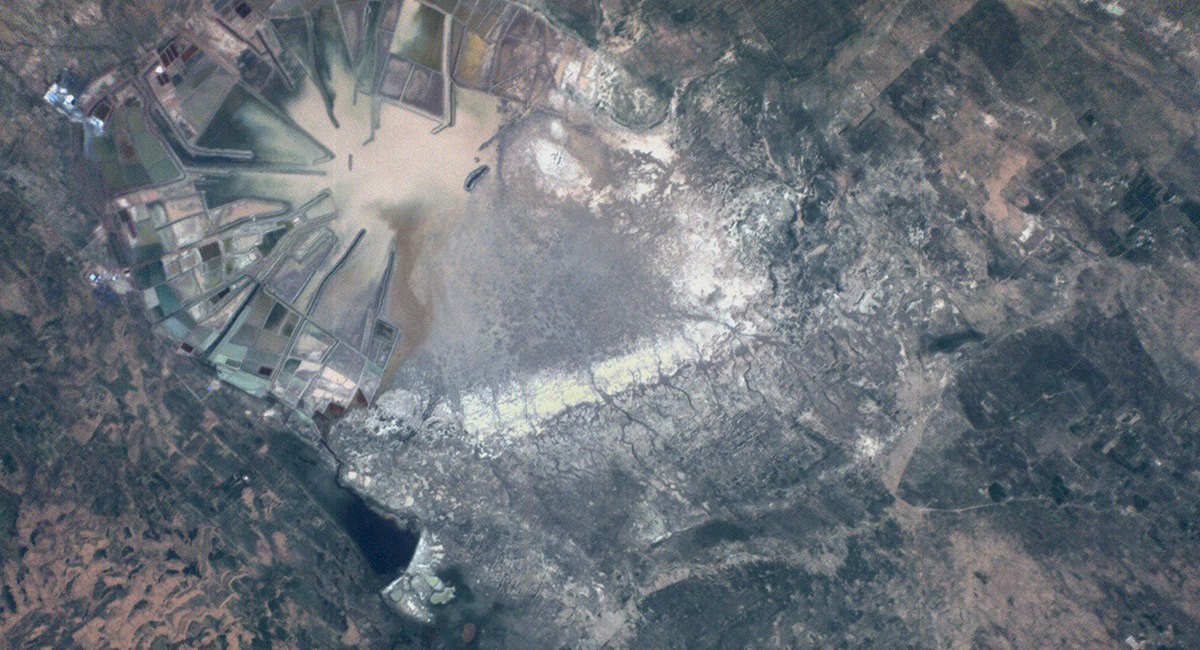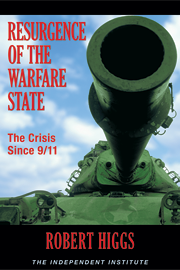How China is dominating rare-earth minerals.
Steve H. Hanke is a professor of applied economics at the Johns Hopkins University in Baltimore. He is a research fellow at the Independent Institute and senior fellow and the director of the Troubled Currencies Project at the Cato Institute. Hanke discussed recent developments in rare-earth minerals with National Review’s Andrew Stuttaford. The interview is edited for clarity and brevity.
Andrew Stuttaford: Back in February, you wrote a piece for Capital Matters on China and rare earths: It didn’t make for reassuring reading (as people can see here). Since then, China has taken an even more aggressive stance towards the U.S.—and not just the U.S.—so I thought it was worth revisiting this issue. But first, please can we have a little background? When did you begin to take an interest in them?
Steve Hanke: Since I was a professor at the world’s premier mining school, the Colorado School of Mines, 55 years ago, I have been closely following the rare-earths industry.
AS: And why do rare earths matter, especially strategically?
SH: They’re vital in the production of many weapons, including the F-35 fighter jet. But rare earths are not just vital for many weapons systems. Far from it. They are also used in a wide range of consumer products from iPhones to DVD players to rechargeable batteries. They are also critical for many “green” products, such as LED lights. Many key products, such as motors in electric cars and the generators in wind turbines, contain specialized magnets that require rare earths. The reserves of rare earths are scattered around the globe in countries such as Australia, the United States, and Myanmar, with China holding down the top spot with about 40 percent of the world’s reserves.
AS: Isn’t China’s position in the rare-earth markets even greater than that percentage would suggest?
SH: Yes. For example, I talked about certain specialized magnets. China produces 90 percent of those magnets. But there’s much more to the story than that. When it comes to mining rare earths, China’s lead becomes dominant. Indeed, over 70 percent of rare earths are mined in China. Further downstream is processing. At that stage, China is even more dominant, processing nearly 90 percent of the world’s rare earths.
AS: How has China managed to build this position, and what are the implications of this?
SH: China has an outsized dominance in what I term the Three Ms: (1) Mining and Mineral Engineering, (2) Metallurgical Engineering, and (3) Materials Science and Engineering. When it comes to rare earths and the Three Ms, China is fully aware of just how strategically important their position is.
When it comes to the world’s top-flight universities, China is nowhere to be found in the top 20. But, when we move into the Three Ms, things change dramatically. China dominates in Mining and Mineral Engineering, with nearly half (45 percent) of the world’s top-20 programs in those fields. When it comes to Metallurgical Engineering, China holds down 45 percent of the top-20 programs in the world. In Materials Science and Engineering, China slips a bit, but still holds down 25 percent of the world’s first-class programs.
As the Global Times, a state-owned Chinese newspaper, put it, rare earths are “an ace in Beijing’s hand,” and this is something that Beijing has understood for a while. As far back as 1992, Deng Xiaoping stressed that “the Middle East has oil; China has rare earths.”
China knows that rare earths can be weaponized. In May 2019, China’s Natural Development and Reform Commission, a body that oversees Chinese policy shifts, pointedly brought up rare earths in a question-and-answer bulletin regarding the prospects of a rare-earths-export ban. The notice read: “Will rare earths become China’s counter-weapon against the U.S.’s unwarranted suppression?” Well, the Ministry of Industry and Information Technology is refining China’s strategy of rare-earths weaponization as we speak.
It is not unreasonable to think that there is a connection between the CCP’s awareness of the potential value of rare earths to China and the country’s outsize position in the Three Ms. But it wasn’t until 2001 that I was able to turn up specific evidence that the Chinese government was pouring money into education and development of the Three Ms. This is in sharp contrast with the United States, where the entire Bureau of Mines and its important Division of Mineral Economics were abolished in 1996. In fact, when it comes to the mineral industry in the United States, the government’s strategy is little more than a catalog of jaw-dropping incompetence and ham-fisted mismanagement.
As far as President Biden is concerned, he has done what all presidents have done when confronted with the problems associated with critical materials. He has reached for the checkbook. Indeed, just two months ago, the U.S. Senate approved a $250 billion bill to boost spending on technology research, including funds for mining and processing critical materials, in a desperate attempt to catch up with China. If history is a guide, this initiative will simply be more taxpayer money down a rat hole.
AS: We’ve seen some dramatic dislocations in supply chains in the wake of our emergence from the pandemic. Do you think that, when they look at their dominance in rare earths, the Chinese will have learned anything new from it?
SH: No, but the U.S. should.
AS: Do you have any good news regarding rare earths for us at all?
SH: Yes, from Greenland! Well, partly anyway. I’ll refer you to this article from April by NR’s Jimmy Quinn, in which he discussed how the general election there (Greenland is largely autonomous, though technically part of Denmark) revolved around a rare-earths mining project backed by an Australian company in which (surprise!) a Chinese firm has a significant participation. A party opposed to the project won the most seats and now leads the governing coalition. It’s too early to say that the project is over yet, but it certainly faces a very uphill path from here. To the extent that this will deny China yet more control (if in this case indirect) over rare earths, this is encouraging, if only in this respect. It is unclear how much of a precedent this is, however. Much of the objection to this proposed plan revolved around the fact that it would also have involved mining uranium. In the case of other rare earth locations in Greenland (there is at least one other, controlled by an independent Australian company), it might be a different matter.
AS: After a year and half of COVID-19, what’s your view on what is going to happen to prices in this sector?
SH: Mineral prices are rapidly reverting towards their mean value. In short, they’re going up, and they will stay strong.
AS: Do you see any correlation between the current U.S. fiscal stimulus and the demand for semiconductors? If yes, would you explain to us why it matters?
SH: Yes, I do see a correlation between the U.S. stimulus and the demand for semiconductors. The stimulus, fueled by the Fed’s money machine, has jump-started the U.S. economy. Indeed, the Atlanta Fed projects a stunning 6.0 percent real GDP growth for 2021. As a result, the demand for automobiles has surged, and there’s a shortage of semiconductors required as inputs for new automobiles. Ford, General Motors, and Stellantis have dramatically cut back on their production. So there’s a shortage of new cars. And as night follows day, the sales of used cars have picked up the slack and soared. The prices of used cars have increased 45.2 percent during the past year and 10.5 percent during the last month.
AS: Inflation’s rise is a concern for many pundits, who have many explanations for why. Do we expect they will soon be blaming rare earths as a source of inflation?
SH: Well, I cannot predict who or what they will blame, but inflation is always and everywhere a monetary phenomenon. And since March 2020, the money supply, measured by M2, has grown by 23.2 percent per year, which is nearly four times higher than the rate that would allow the Fed to hit its inflation target of 2 percent per year. More inflation is already baked into the cake and has relatively little to do with various supply-side disruptions.
AS: “Socially responsible” investing (particularly its ESG variant) has come into the spotlight in recent years. Mining companies are not exactly beloved by the ESG crowd, which has now attracted significant institutional support. The implication of what you have been saying is that the West needs to ensure that more rare-earth sources are developed outside China. Do you see ESG getting in the way of that?
SH: It could, although those who raise that objection should ask themselves whether China is likely to be a source of more “socially responsible” rare earths than producers located in countries more susceptible to Western pressure. Additionally, there are some mining and metallurgical companies that are extremely advanced and are producing critical materials that hugely reduce our carbon (CO2) footprints. As a free-market environmentalist, I am very optimistic that these firms will continue to enable massive reductions in CO2 emissions. I laid all this out in an article I co-authored with Dr. Heinz Schimmelbusch entitled “On Measuring Greenness,” which appeared in a German periodical, Stern Stewart Institute Periodical #10, in June 2014. In short, there are some mining and metallurgical companies in the critical-materials sphere that are green enough to satisfy the demands of many ESG-influenced investors.










